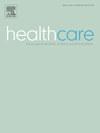Transforming latent tuberculosis infection (LTBI) testing and treatment at a federally qualified health center
IF 2.1
4区 医学
Q3 HEALTH POLICY & SERVICES
Healthcare-The Journal of Delivery Science and Innovation
Pub Date : 2025-07-16
DOI:10.1016/j.hjdsi.2025.100766
引用次数: 0
Abstract
- •The Massachusetts Department of Public Health partnered with Lynn Community Health Center (LCHC) to scale up testing and treatment for latent tuberculosis infection (LTBI) for a non-US born patient population. The project team developed a workflow to manage patients through the LTBI care cascade with screening performed in primary care and diagnostic testing, evaluation, and treatment undertaken by a TB team within the health center. To support the clinical workflow, the team implemented process improvements, addressed access barriers, and made electronic health record (EHR) enhancements.
- •LCHC successfully increased LTBI testing and treatment for non-US born patients, while sustaining engagement through the care cascade.
- •Strategic distribution of responsibilities, attention to process refinement, EHR enhancements, and collaboration with public health experts helped make the scale-up possible.
- •Three core factors kept patients more engaged, minimized gaps in treatment, and alleviated burdens associated with LTBI treatment: 1) flexibility with scheduling visits, 2) focus on building trusting, supportive relationships between care providers and patients, and 3) consistent outreach, reminders, and follow-up with patients on treatment.
- •Maintaining high testing and treatment volumes requires consistent effort, sustained attention, and staffing continuity.
转化潜伏结核感染(LTBI)的检测和治疗在联邦合格的卫生中心
•马萨诸塞州公共卫生部与林恩社区卫生中心(LCHC)合作,为非美国出生的患者群体扩大潜伏性结核病感染(LTBI)的检测和治疗。项目团队制定了一个工作流程,通过LTBI护理级联管理患者,在初级保健中进行筛查,并由卫生中心内的结核病小组进行诊断测试、评估和治疗。为了支持临床工作流程,该团队实施了流程改进,解决了访问障碍,并增强了电子健康记录(EHR)。•LCHC成功地增加了非美国出生患者的LTBI测试和治疗,同时通过护理级联保持参与。•责任的战略性分配、对流程改进的关注、电子病历的加强以及与公共卫生专家的合作有助于扩大规模。•三个核心因素使患者更积极参与,减少治疗间隔,减轻LTBI治疗相关的负担:1)灵活安排就诊时间,2)专注于在护理提供者和患者之间建立信任和支持的关系,以及3)持续的外展,提醒和随访患者的治疗。•保持高检测和治疗量需要持续的努力、持续的关注和人员配置的连续性。
本文章由计算机程序翻译,如有差异,请以英文原文为准。
求助全文
约1分钟内获得全文
求助全文
来源期刊

Healthcare-The Journal of Delivery Science and Innovation
HEALTH POLICY & SERVICES-
CiteScore
4.90
自引率
0.00%
发文量
37
期刊介绍:
HealthCare: The Journal of Delivery Science and Innovation is a quarterly journal. The journal promotes cutting edge research on innovation in healthcare delivery, including improvements in systems, processes, management, and applied information technology.
The journal welcomes submissions of original research articles, case studies capturing "policy to practice" or "implementation of best practices", commentaries, and critical reviews of relevant novel programs and products. The scope of the journal includes topics directly related to delivering healthcare, such as:
● Care redesign
● Applied health IT
● Payment innovation
● Managerial innovation
● Quality improvement (QI) research
● New training and education models
● Comparative delivery innovation
 求助内容:
求助内容: 应助结果提醒方式:
应助结果提醒方式:


